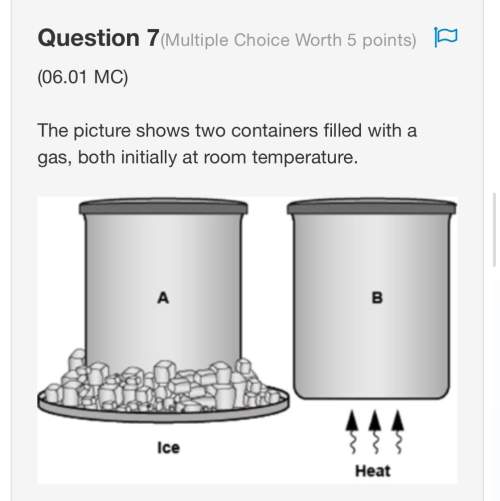
Chemistry, 14.12.2019 01:31 officialrogerfp3gf2s
Which of the following statements are true regarding the effect of flame temperature on atomic absorbance and atomic emission spectroscopy?
i. varying the flame temperature by 10 k hardly affects the ground-state population of the analyte and would not noticeably affect the analyte signal in atomic absorption.
ii. varying the flame temperature by 10 k hardly affects the excited-state population of the analyte and would not noticeably affect the analyte signal in atomic emission.
iii. varying the flame temperature by 10 k affects the ground-state population of the analyte and will noticeably affect the analyte signal in atomic absorption.
iv. varying the flame temperature by 10 k affects the excited-state population of the analyte and will noticeably affect the analyte signal in atomic emission.
select one:
a. i and ii
b. iii and iv
c. i and iv
d. ii and iv
e. ii and iii

Answers: 3


Another question on Chemistry

Chemistry, 22.06.2019 08:00
Which of the following observations indicates that there is a small, dense, positively charged part in the center of an atom? some uncharged particles are scattered by a gold foil. all uncharged particles are attracted towards a gold foil. all positively charged particles pass straight through a gold foil. some positively charged particles bounce back from a gold foil.
Answers: 2

Chemistry, 22.06.2019 11:40
Effect of rotenone and antimycin a on electron transfer rotenone, a toxic natural product from plants, strongly inhibits nadh dehydrogenase of insect and fish mitochondria. antimycin a, a toxic antibiotic, strongly inhibits the oxidation of ubiquinol. (a) explain why rotenone ingestion is lethal to some insect and fish species. (b) explain why antimycin a is a poison. (c) given that rotenone and antimycin a are equally effective in blocking their respective sites in the electron-transfer chain, which would be a more potent poison? explain.
Answers: 3

Chemistry, 22.06.2019 20:40
What effect would average population growth have on land usage? a. urban use of land would rise to more than 30 percent of available land. b. industrial use of land would rise to more than 30 percent of available land. c. the percentage of available land used as cropland would stay the same. d. cropland would fall to about 10 percent of available land.
Answers: 1

Chemistry, 22.06.2019 23:30
If maltose undergoes hydrolysis what subunits does it results to?
Answers: 2
You know the right answer?
Which of the following statements are true regarding the effect of flame temperature on atomic absor...
Questions








Computers and Technology, 12.03.2020 23:59






Mathematics, 12.03.2020 23:59

Mathematics, 12.03.2020 23:59

Mathematics, 12.03.2020 23:59




Computers and Technology, 12.03.2020 23:59




